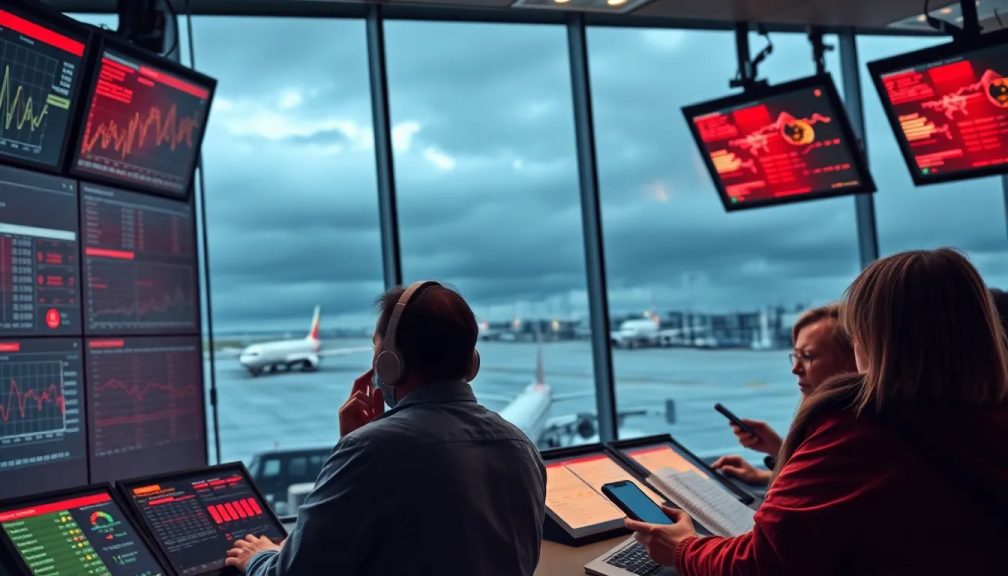Cyberattack on European Airports: MUSE Platform and Billing System Down

In an era where technology intersects with critical infrastructure, the vulnerability of essential systems becomes a focal point for cybersecurity. The recent cyberattack on European airports serves as a stark reminder of this reality, causing widespread disruptions and raising questions about the robustness of security measures in place for vital services.
As hackers evolve, so do their methods and targets. While financial gain remains a primary motivator, some attacks stem from motives as diverse as political messaging or even amusement. In this instance, an unidentified group of hackers targeted the MUSE platform, a software integral to the automatic check-in systems at several European airports, leading to significant operational challenges.
Impact of the Cyberattack on European Airports
This past weekend, a major incident was reported involving Collins Aerospace, resulting in a significant disruption of the cloud backend that supports the automatic check-in system. The MUSE software, essential for streamlining check-in processes across multiple airports, was rendered inoperable.
The MUSE platform allows airlines to share check-in details seamlessly across various points, including counters, kiosks, and boarding gates. This interconnectivity, while efficient, also presents vulnerabilities that can be exploited by malicious actors.
Consequently, the cyberattack successfully incapacitated the backend systems, forcing airlines to revert to manual check-in processes, which are inherently slower and less efficient. Airports such as Brussels-Zaventem, Berlin-Brandenburg, and Heathrow in the UK were notably affected by this attack.
Flight Cancellations and Delays
The repercussions of this cyberattack were immediately felt by travelers. Notably, Brussels Airport was forced to cancel 45 out of 257 departing flights, marking an 18% cancellation rate. Additionally, many flights experienced delays of up to 90 minutes due to the slow manual processes that replaced the automated systems.
At Berlin Airport, the situation escalated to the suspension of access to check-in kiosks, leading to a direct processing method managed solely by airline staff. Meanwhile, albeit without cancellations, Heathrow Airport reported significant delays across numerous flights, highlighting the widespread impact of the attack.
Collins Aerospace characterized the event as a cyber incident, yet refrained from disclosing further details regarding the nature of the attack, whether data was stolen, or the identity of the perpetrators. This lack of information only underscores the vulnerabilities within the MUSE infrastructure, which is crucial for the automatic check-in systems.
The Vulnerability of Airport Infrastructure
The incident has raised alarms regarding the security protocols surrounding the MUSE platform, as nearly every operational aspect of the airport is linked to it. The overarching concern is that if such a critical system can be compromised, it poses a significant risk to the safety and efficiency of air travel.
As airports increasingly rely on interconnected systems, the potential impacts of these vulnerabilities extend beyond operational disruptions. They also encompass risks to passenger safety and data security. In light of this, several steps can be considered to strengthen cybersecurity in airport operations:
- Investment in advanced cybersecurity technologies.
- Regular security audits and penetration testing.
- Implementation of comprehensive incident response plans.
- Staff training on cybersecurity awareness.
- Collaboration with government agencies for threat intelligence.
Future Implications and Regulatory Changes
The European Union is set to introduce the NIS2 Directive, which is aimed at enhancing cybersecurity across various sectors, including transportation. This directive, expected to come into effect in October, mandates that critical infrastructures, such as airports, adhere to stricter cybersecurity protocols and reporting requirements.
Under the NIS2 framework, airports will be classified as critical infrastructure, requiring them to adopt a more proactive stance on cybersecurity. This includes enhanced measures to mitigate risks and respond effectively to incidents, ensuring that both public and private sectors are prepared to handle potential threats.
Such changes are crucial, considering that air travel is not just a convenience but a vital part of the global economy. Efficient and secure operations are paramount to maintaining public trust and safety. Stakeholders in the aviation industry must prioritize cybersecurity as a fundamental component of their operational strategy.
For a visual representation of the impact of cyberattacks on airport operations, check out this informative video:
Conclusion: A Call to Action for Improved Cybersecurity
The recent cyberattack on the MUSE platform highlights the necessity for improved cybersecurity measures across all sectors, particularly those that manage critical infrastructure like airports. As the frequency and sophistication of cyber threats continue to rise, stakeholders must take a unified approach to safeguard these essential services.
By adopting a multi-faceted strategy that encompasses technology, training, and regulatory compliance, the aviation industry can work towards not only mitigating the risks of future attacks but also ensuring the safety and reliability of air travel for all passengers.




Leave a Reply